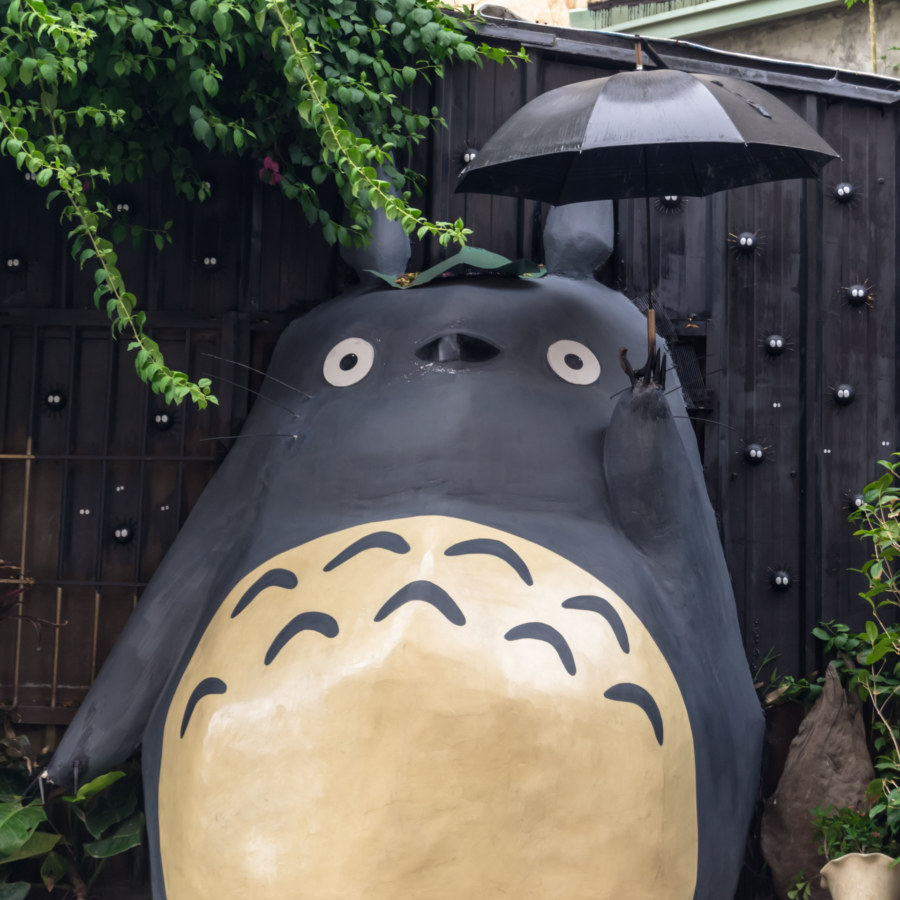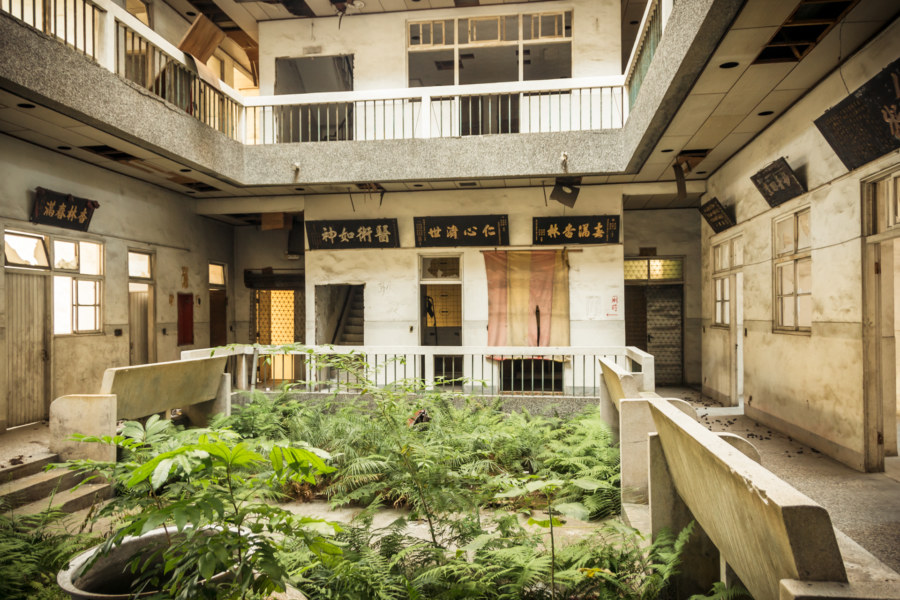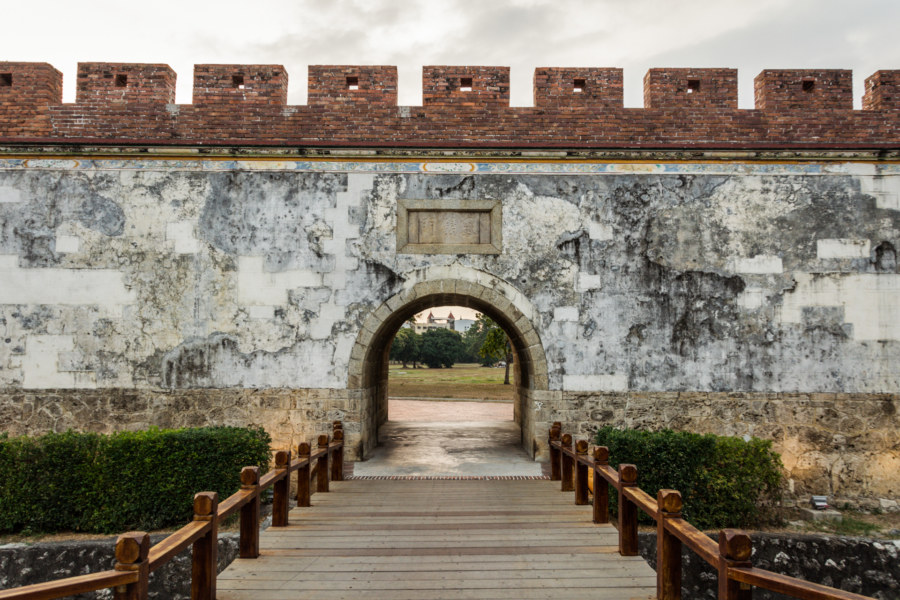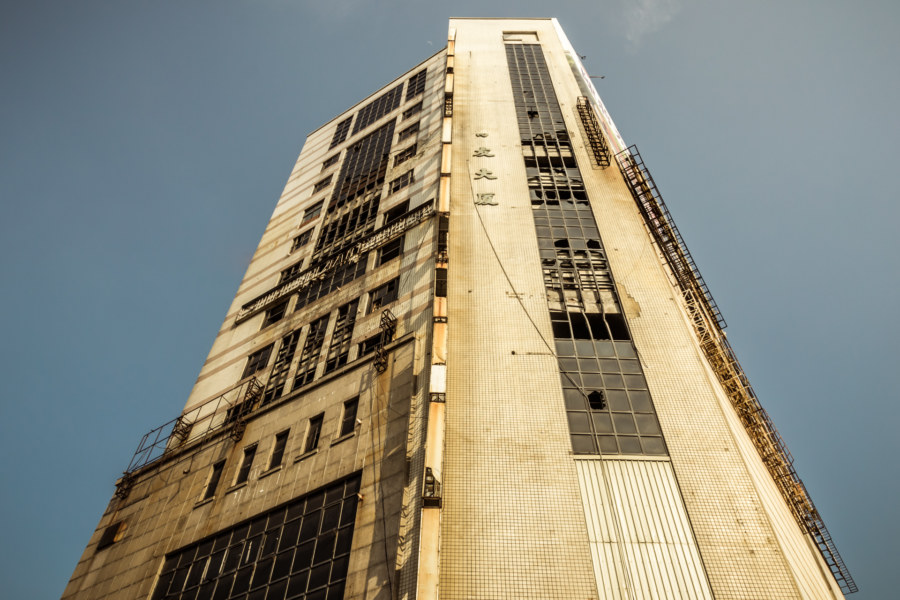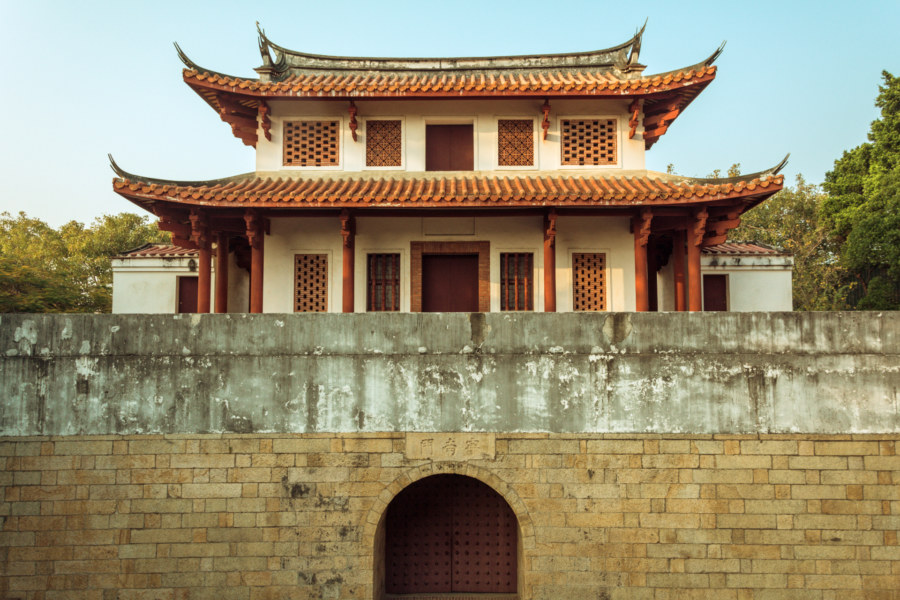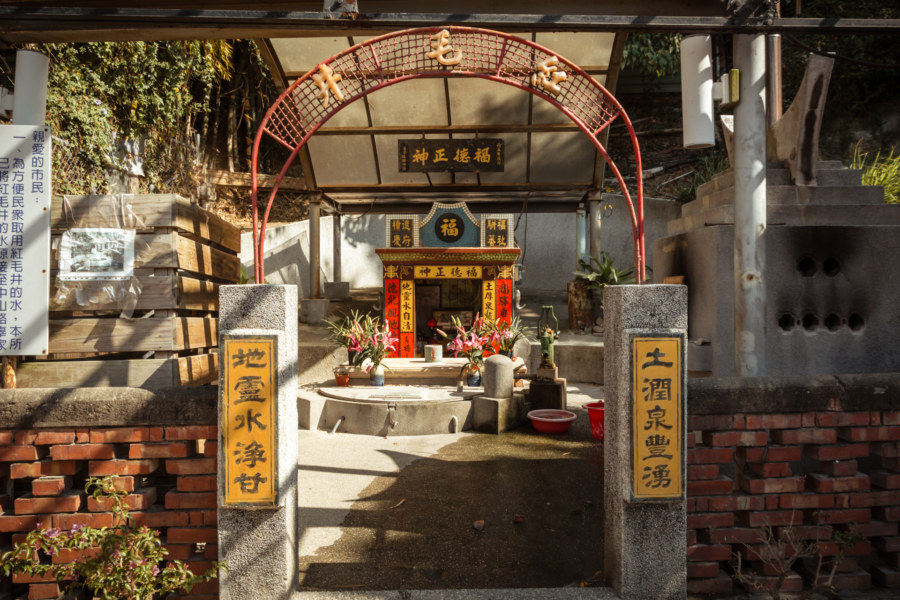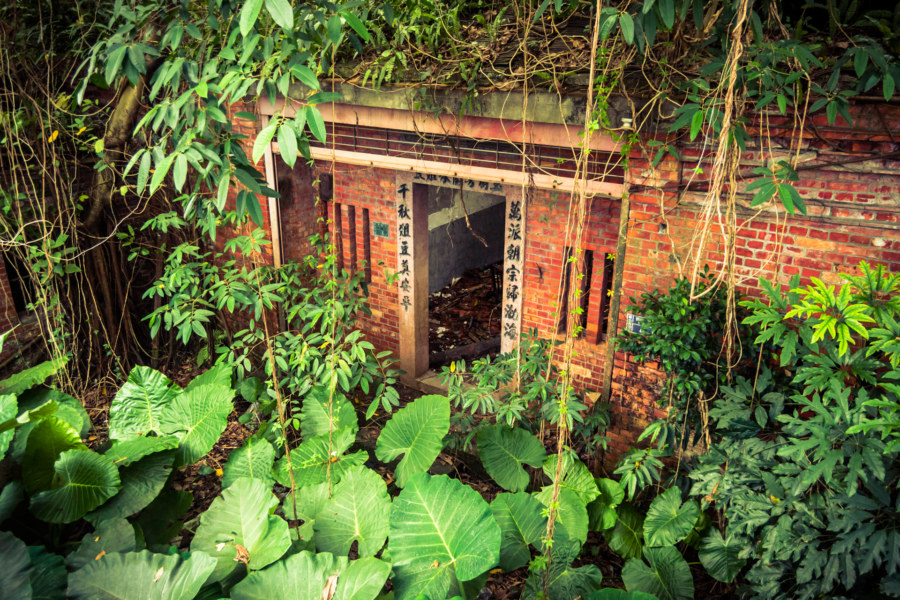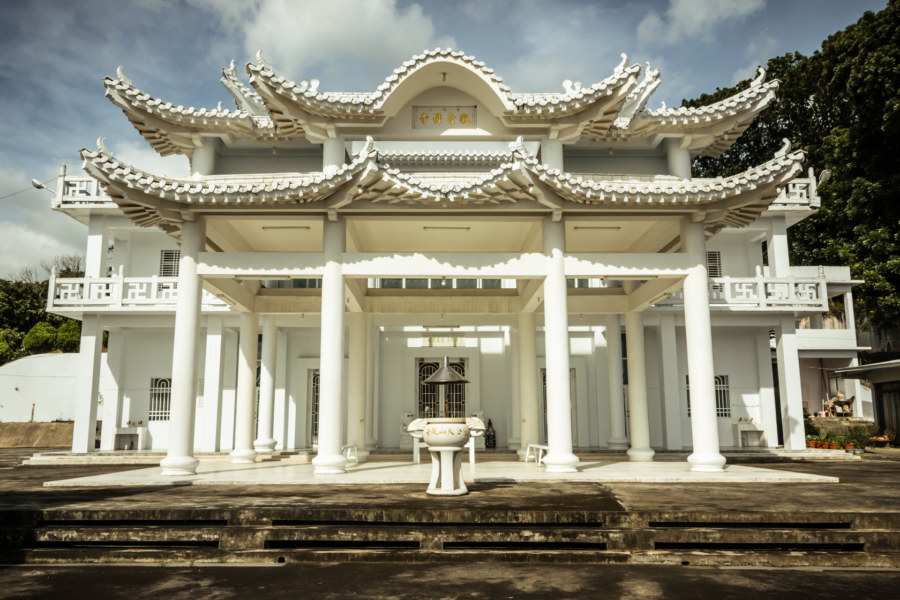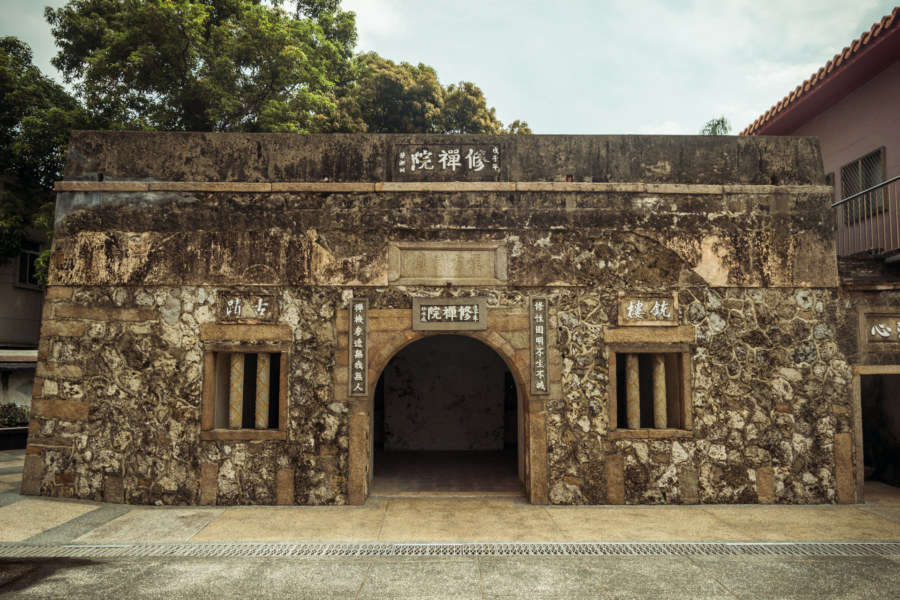Taiwan loves Totoro, the iconic star of Miyazaki’s animated classic My Neighbor Totoro. Known locally to Chinese speakers as Duōduōlóng 多多龍 (or 豆豆龍) and—my favourite—Lóngmāo 龍貓 (literally “dragon cat”), Totoro recently appeared on the streets of Taichung alongside Chibi and Chu Totoro, numerous makkuro kurosuke (soot sprites) and No-Face (who appeared in Spirited Away). These life-sized, fan-made sculptures have drawn so much interest that the site even appears on Google Maps as Dàlǐ Totoro Bus Stop 大里龍貓公車站.
This category mainly features location-specific content about individual points of interest. These might be historic sites, tourist attractions, abandoned places, or something else constrained by geography.
Xinglin General Hospital 杏林綜合醫院
Xìnglín General Hospital 杏林綜合醫院 is perhaps the most famous ruin in downtown Tainan, Taiwan. It opened for business in 1975 as the largest hospital in the city and catered to the burgeoning middle class during the boom times of the Taiwan Economic Miracle. In 1993 the hospital shut down after being plagued by a number of scandals involving fraudulent records, medical malpractice, and allegations of wrongful death. Ongoing legal battles and fragmented ownership have left the building abandoned and neglected since then.
The Old Walled City of Zuoying 鳳山縣舊城
A month ago I embarked upon a day trip to Zuoying to check out the famous temples and pagodas of Lotus Pond 蓮池潭, one of the main tourist attractions of greater Kaohsiung. Afterwards I wandered over to have a look at the old city of Zuoying 左營舊城, originally built in 1722 by the ruling Qing Dynasty in response to the many uprisings that regularly plagued Taiwan Prefecture 臺灣府.
Qiaoyou Building 喬友大廈
I have been living next to the magnificent ruins of the Qiáoyǒu Building 喬友大廈 in Changhua City for the last several months. Not a day goes by where I’m not walking or riding by this hulking derelict, looking up and wondering about what I might find inside. I had some general idea, of course, as I already recognized the building for what it was: one of many shopping and entertainment complexes built in central Taiwan during the economic boom of the late 1970s and early 1980s. Most of these former showpiece properties have been abandoned in the decades since, usually due to some combination of mismanagement, declining fortunes, and fire damage.
The Great Southern Gate of Tainan 臺灣府城大南門
Nanmen, Tainan’s great southern gate.
Dànánmén 大南門, also known as Níngnánmén 寧南門, is one of two great gates remaining in Tainan, the most historic city in Taiwan. Built in 1725, it has been renovated several times but maintains its classical charm. Nowadays it can be found in a gorgeous park just south of the Confucius Temple on Nánmén Road 大南路. The gate itself is surrounded by a secondary fortification, a barbican or wèngchéng 瓮城, which provides additional defensive capabilities. As usual, Tainan City Guide has an excellent write-up about this historic landmark.…
Changhua City Red Hair Well 彰化市紅毛井
The Red Hair Well 紅毛井 (pinyin: Hóngmáojǐng) in Changhua City is another curious footnote. Located behind the Changhua Arts Museum at the foot of Baguashan, this well supposedly dates back to the mid-1600s, in the midst of the Dutch colonial era. The Dutch sunk this well to provide for soldiers and missionaries passing through the area but never actually controlled this land. The name derives from âng-mo, which is literally “red hair” in Hokkien or Taiwanese, an obvious visual contrast to the black hair of Chinese people.
Xindian Old House 新店老屋
Not long after moving to Wenshan in Taipei I went out riding to explore the neighbourhood. At some point I found myself on the opposite side of Jingmei River from where I was living at the time. Nestled into a bend in the river, this small nub of land was home to several factories, office buildings, and hotels that looked like they probably charged by the hour. There were almost no homes whatsoever—which seemed rather strange for that part of the city—but as I cycled along a Bǎoqiáo Road (寶橋路) laneway I noticed a traditional home hidden in the foliage to one side and stopped to investigate.
Putuoshan White Temple 普陀山白衣道場
Pǔtuóshān White Temple (普陀山白衣道場) is one of the more unusual temples I have visited in Taiwan. Named after Putuoshan, one of the holy mountains of Chinese Buddhism, and dedicated to the worship of Guanyin (觀音), goddess of mercy, it appears to have been built in 2004. Apart from these basic details it seems like very little is known about this mysterious temple.
Xunfang Fortress 巽方砲台
Xunfang Fortress 巽方砲台 is another obscure historic site in Tainan that I found while digging into the archives of the excellent Tainan City Guide. This Qing dynasty era ruin can be found on the grounds of a monastery in East Tainan not far from the location of Dadong Night Market 大東夜市.
Anping Tree House 安平樹屋
Anping Tree House (安平樹屋) is one of the main attractions in Anping, the old colonial quarter of Tainan, and yet another example of disaster tourism in Taiwan. I only got around to going over the lunar new year break despite having lived in Tainan for several months last year. I suppose the fact that it is an actual tourist attraction kept me from checking it out before, but I’m glad I went. Since a few of the photos turned out well enough to share I figure I may as well add it to my growing catalog of abandoned places around Taiwan.
